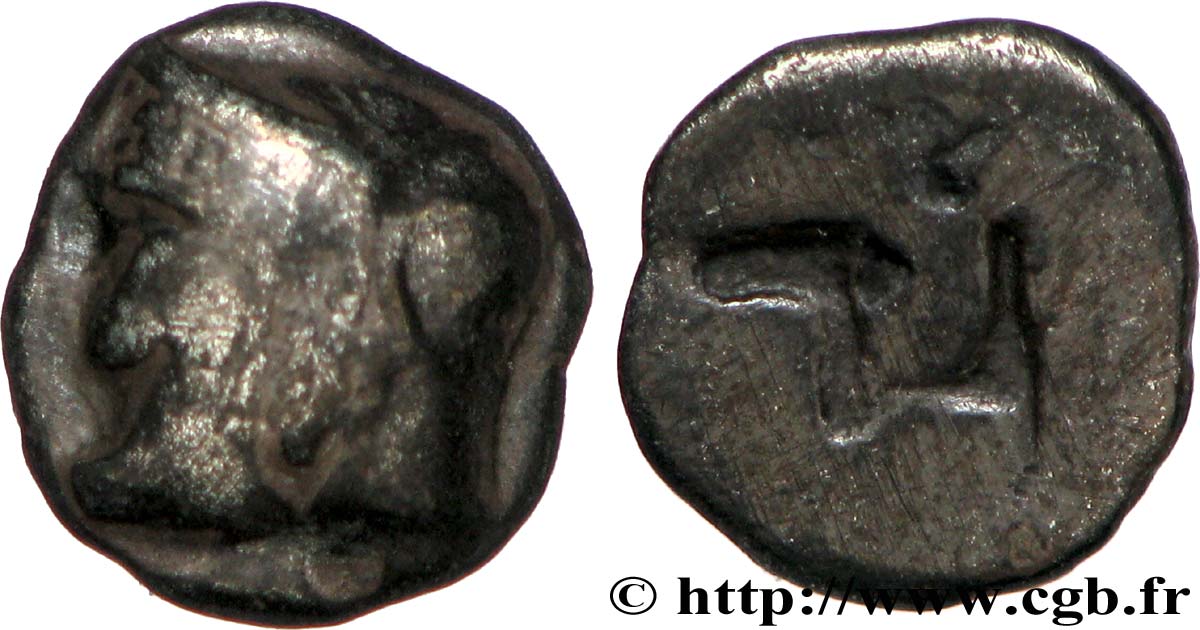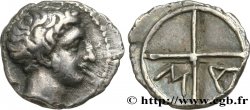bga_321706 - MASSALIA - MARSEILLE Litra du type du trésor d'Auriol à la tête d'Artémis
162.00 €(Approx. 170.10$ | 134.46£)
Quantity
Add to your cart

Type : Litra du type du trésor d'Auriol à la tête d'Artémis
Date: c. 480-470 AC.
Mint name / Town : Marseille (13)
Metal : silver
Diameter : 9,5 mm
Weight : 0,74 g.
Rarity : R2
Coments on the condition:
Flan un peu court mais frappe centrée. Usure importante et homogène avec une belle patine sombre et brillante de collection ancienne
Catalogue references :
Obverse
Obverse legend : ANÉPIGRAPHE.
Obverse description : Tête d'Artémis à gauche, la coiffure en pointillés retombant en pointe sur la nuque.
Reverse
Reverse legend : ANÉPIGRAPHE.
Reverse description : Carré creux irrégulier.
Commentary
Ce type de tête correspond au n° 9 de l’Annexe 2 de Furtwängler ou encore aux monnaies 10 à 21 du trésor massaliète du Ve siècle étudié dans la RN 1983.
Cette coiffure dite “au crobilos” ne semble pas avoir été reprise dans le Dicomon (?). Le OBB-3 est d’un style très particulier qui ne peut être pris comme monnaie type. Le style du OBB-7 est plus représentatif, mais associé à un sanglier au revers !.
Cette coiffure dite “au crobilos” ne semble pas avoir été reprise dans le Dicomon (?). Le OBB-3 est d’un style très particulier qui ne peut être pris comme monnaie type. Le style du OBB-7 est plus représentatif, mais associé à un sanglier au revers !.








 Report a mistake
Report a mistake Print the page
Print the page Share my selection
Share my selection Ask a question
Ask a question Consign / sell
Consign / sell
 Full data
Full data









